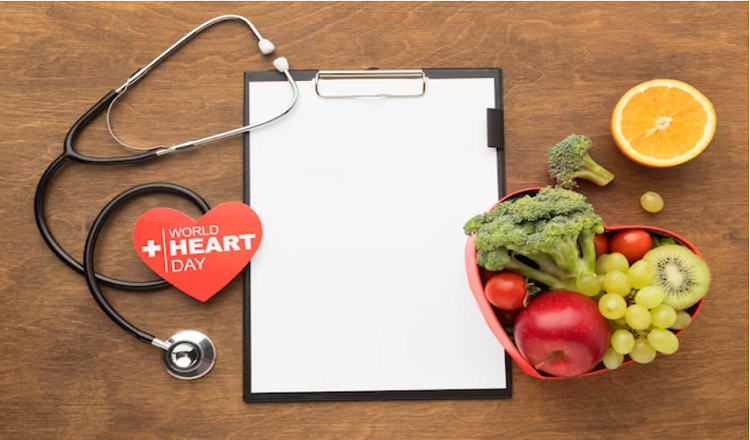
Welcome to the world of the DASH diet, which has been shown to decrease blood pressure and strengthen the heart. You’re in the right place if you want to alter things for the better in terms of your health. The DASH diet, its advantages, and how it can help you improve your general health will all be covered in this blog.
What is the DASH diet, then? Dietary Approaches to Stop Hypertension is known as DASH. It is a diet full of lean proteins, low-fat dairy foods, whole grains, fruits, and vegetables. Because sodium and saturated fats are two of the main causes of high blood pressure and heart disease, the DASH diet is created to be low in both of these nutrients. The DASH diet is a fantastic option for people trying to enhance their heart health because studies have shown that it can lower blood pressure in as little as two weeks. In fact, the American Heart Association estimates that about 45% of American adults have high blood pressure, which puts them at an increased risk for heart disease, stroke, and other health problems. Therefore, keep reading to learn more about the DASH diet if you’re looking for a way to enhance your health and reduce your risk of developing these problems.
Knowing about high blood pressure
In the USA, high blood pressure, sometimes referred to as hypertension, is a prevalent health issue. When the blood pressure against the artery walls is too high, it happens. High blood pressure can be brought on by a variety of factors, including genetics, lifestyle choices like a high-sodium diet, inactivity, and stress.
People who have high blood pressure are more likely to experience several health issues, including heart attack, stroke, renal illness, and eyesight loss. The persistent stress of high blood pressure over time can weaken and stiffen the artery walls, which might result in other health issues.
The effects of high blood pressure on heart health are among the most alarming features of the condition. Blood pressure affects how well the heart pumps blood throughout the body. High blood pressure forces the heart to work harder, which can harm the heart muscle and result in heart disease. In order to lower blood pressure and improve overall health, it is crucial to understand the reasons of high blood pressure and the hazards that come along with it.
Summary of the DASH diet programme
In order to promote heart health and lower blood pressure, the DASH diet emphasises consuming a range of nutrient-dense foods from various food groups. The DASH diet places a strong emphasis on eating particular serving sizes of fruits, vegetables, whole grains, lean meats, and low-fat dairy foods.
A daily calorie intake that varies by age, gender, and amount of activity is advised by the DASH diet. But the diet is intended to be a calorie-restricted, balanced diet that supports both healthy weight loss and weight maintenance.
A crucial component of the DASH diet is cutting back on sodium intake. The DASH diet recommends even less sodium intake, with a daily maximum of 1,500 milligrammes, compared to the American Heart Association’s recommendation of no more than 2,300 milligrammes for adults. Avoiding processed foods and opting for fresh, natural foods will help you achieve this. Overall, the DASH diet emphasises nutrient-rich meals and sensible portion sizes for optimal health. It is a flexible, healthful eating strategy.
Suitable fare for the DASH diet
The DASH diet emphasises consuming nutrient-dense meals that are low in salt, cholesterol, saturated and trans fats. Fruits, vegetables, whole grains, lean proteins, and low-fat dairy products are recommended foods on the DASH diet.
Essential nutrients including fibre, potassium, calcium, magnesium, and antioxidants are included in these foods, all of which are good for the heart. For instance, meals high in potassium, such as bananas, spinach, and avocados, can aid in reducing blood pressure, whilst foods high in fibre, such as whole grains, fruits, and vegetables, can lower cholesterol levels and support a healthy digestive system.
Start by gradually including more fruits and vegetables in your meals and snacks to gradually introduce foods that are DASH diet-approved into your diet. Change processed snacks for fresh fruit, raw vegetables, or nuts, and substitute high-fat meats with lean proteins like chicken, fish, or legumes. Small dietary adjustments over time can have a substantial positive impact on your general health.
DASH diet foods to stay away from
In contrast to avoiding or limiting processed and high-sodium foods, the DASH diet promotes the eating of whole, nutrient-rich foods. Processed meals high in sodium, sugary drinks and snacks, saturated and trans fats, and high-calorie foods with little nutritional value are all things to stay away from when following the DASH diet.
Because they can raise the risk of heart disease, high blood pressure, and other health issues, these foods should be avoided. Foods high in sodium can make you retain water, which can make you feel bloated and raise your blood pressure. Sugary foods and drinks can lead to weight gain and a higher chance of developing diabetes.
Start by reading the labels on your food and selecting low-sodium or no-added-sugar options to minimise or remove these foods from your diet. Drink water or unsweetened tea instead of sugary beverages, and save high-calorie meals like fast food and desserts for special occasions only. Making these changes can help you feel healthier overall and lower your risk of developing chronic diseases.
Advice for maintaining the DASH diet
It might be difficult to follow the DASH diet, especially if you have to eat out or are pressed for time. However, it is possible to keep up a balanced, DASH-friendly diet with a few straightforward strategies.
Meal planning and preparation, which entails organising your meals and snacks in advance and preparing them, is one efficient technique. By having wholesome, DASH-friendly meals and snacks close at hand, this might save time and make it simpler to adhere to the diet.
Making healthy food selections when dining out involves selecting meals that are minimal in sodium, fat, and calories. Look for foods that are grilled, steamed, or baked and request sauces and dressings on the side when ordering at one of the many restaurants that now offer healthier options on their menus.
You may follow the DASH diet and stay motivated by keeping track of your progress. Think about keeping a food diary to record your meals and snacks. Celebrate tiny accomplishments along the road, like reaching a certain weight loss objective or lowering your blood pressure.
Conclusion and prospective future
The DASH diet is an effective method for enhancing heart health and lowering the risk of high blood pressure and heart disease, in conclusion. People can significantly improve their general health and well-being by embracing nutrient-rich foods while reducing processed and high-sodium diets.
According to research, the DASH diet may significantly improve public health in the USA by lowering the prevalence of high blood pressure and its associated health problems. Individuals may take charge of their health and help create a healthier society at large by adopting the DASH diet.
If you’re thinking about adopting the DASH diet, it’s vital to start small and gradually add DASH-recommended foods to your diet. Maintaining progress can be aided by meal preparation and planning, as well as by picking healthy selections when dining out. The DASH diet has several advantages for heart health and general wellbeing when it is followed with commitment and perseverance.
Read More You May Like:
- The Truth About Gluten: Should You Be Avoiding It for Better Health?
- 10 Science-Backed Ways to Boost Your Metabolism and Lose Weight
- How to Beat Sugar Cravings: Tips and Tricks to Break the Cycle
- Intermittent Fasting: The Ultimate Beginner’s Guide to Losing Weight and Improving Health
- Mediterranean Diet: A Delicious and Healthy Way to Eat for Life








